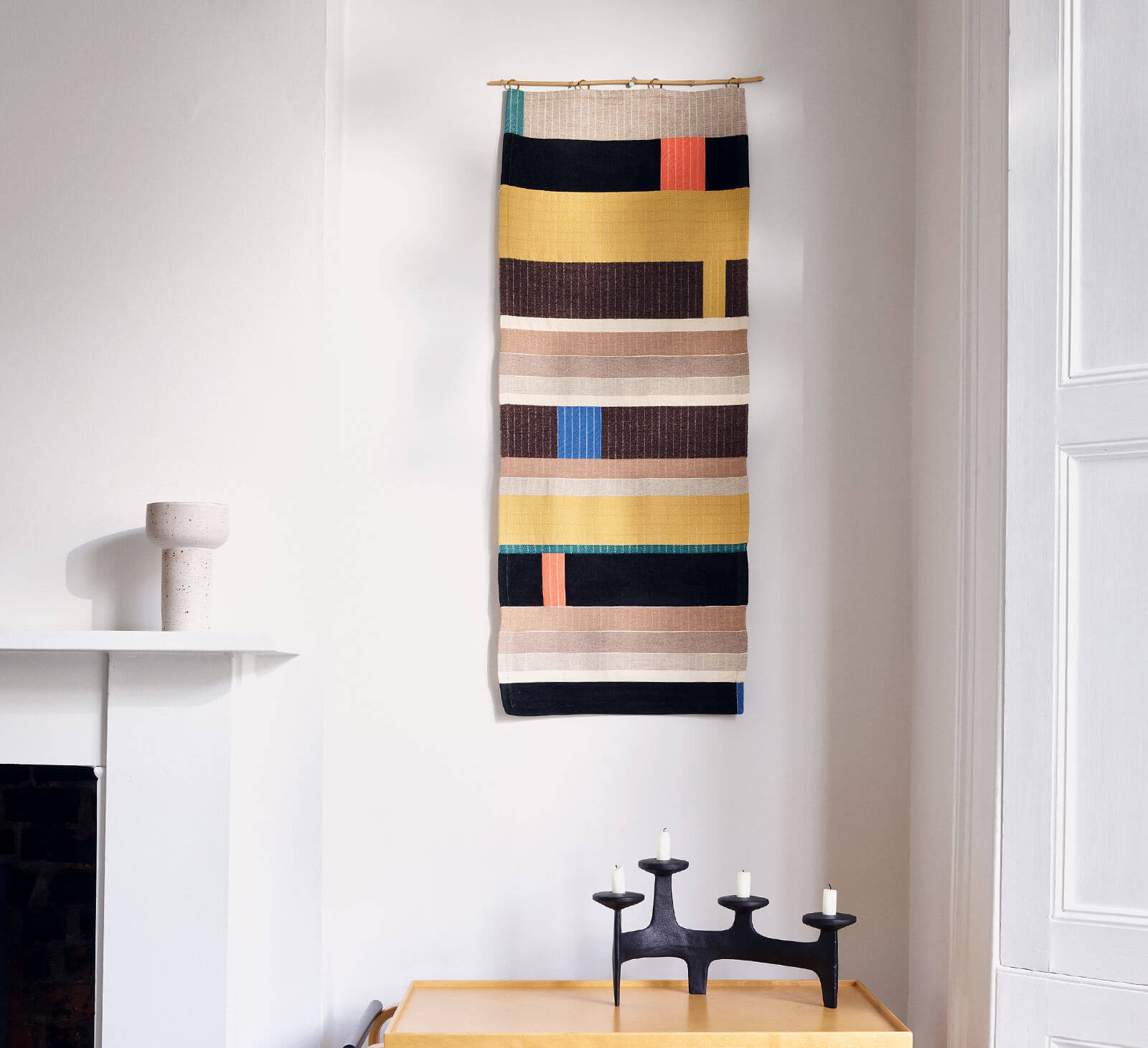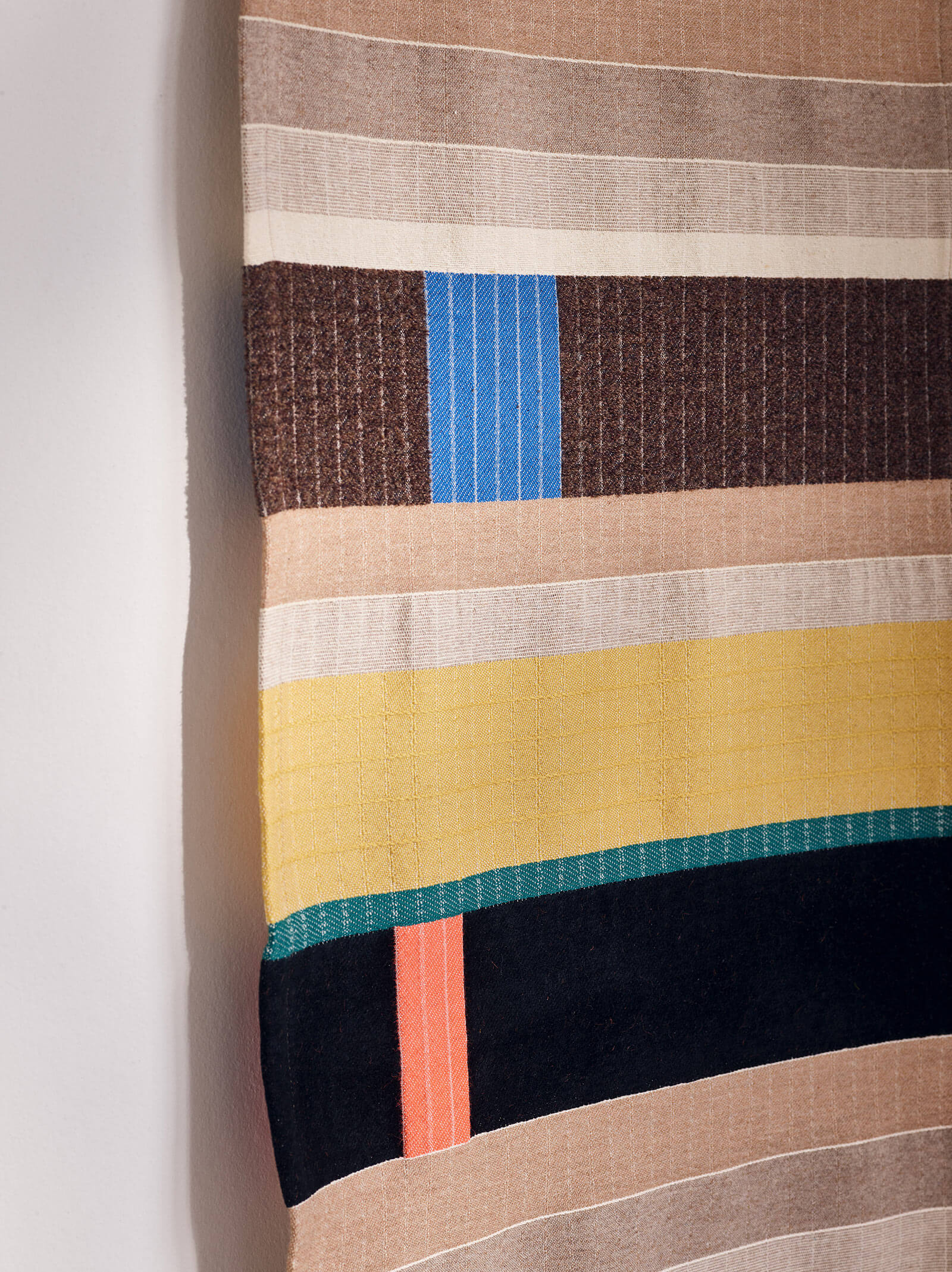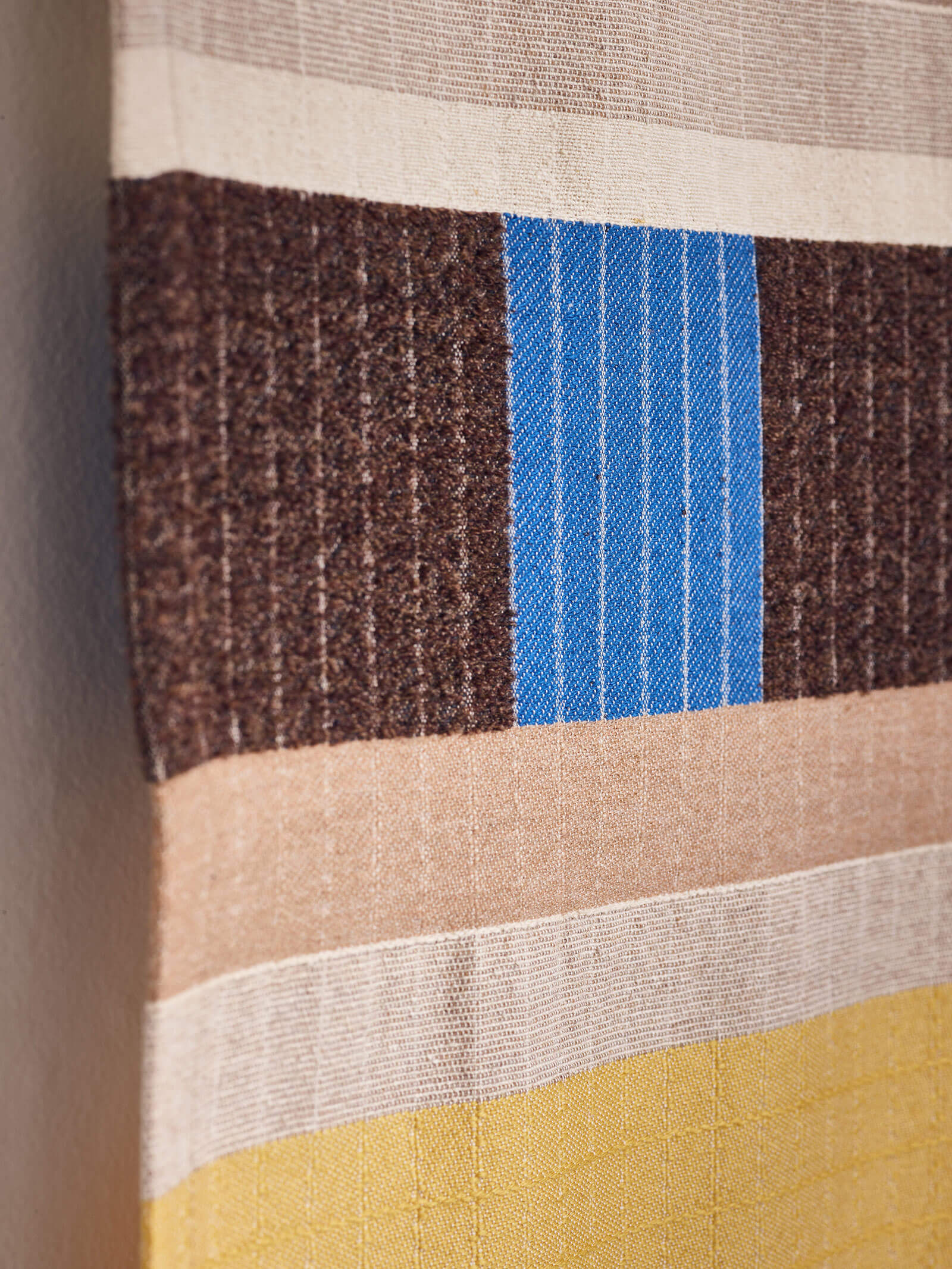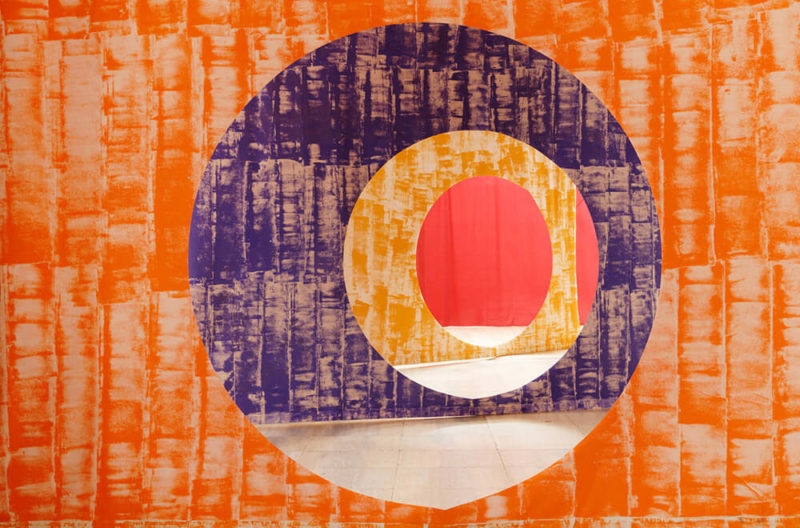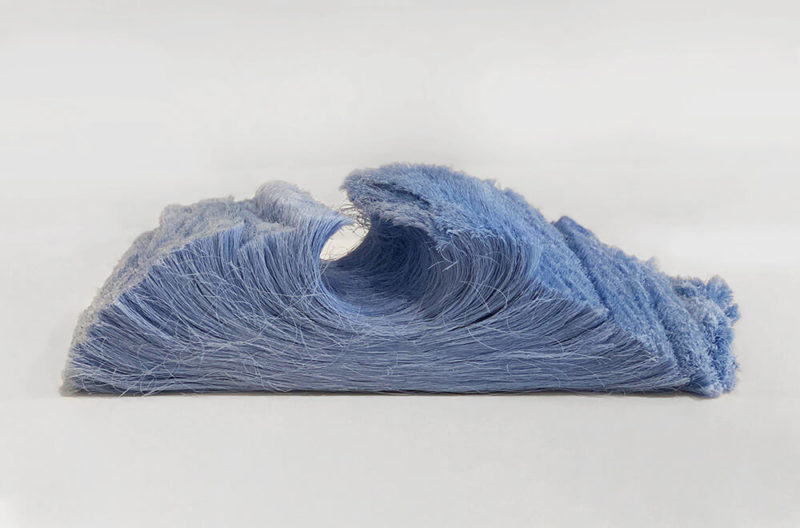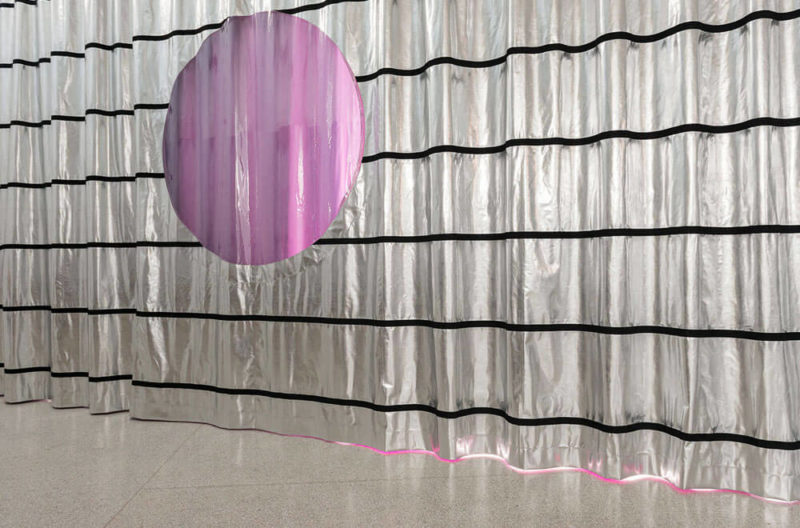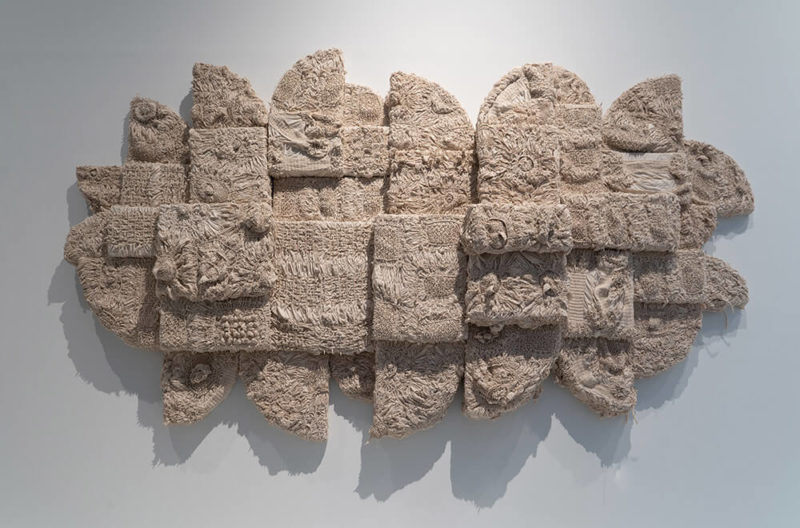‘Wall hanging 1925/2021’, 2021
Anni Albers
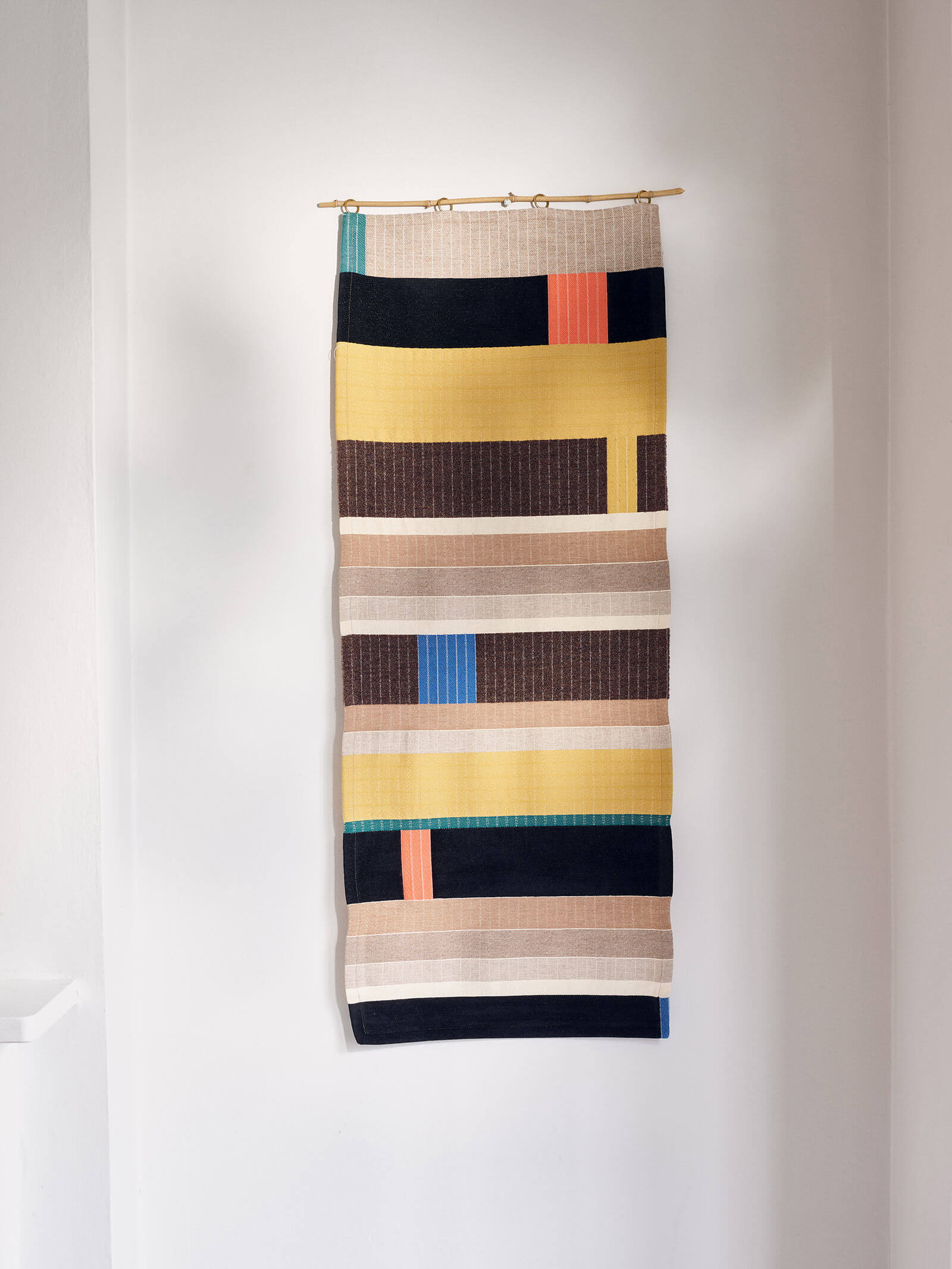
Anni Albers, ‘Wall Hanging 1925-2021’, 2021
COURTESY: twentytwentyone / PHOTOGRAPH: Jake Curtis
1925 WAS A significant year for Anni Albers. Born Annelise Elsa Frieda Fleischmann in 1899, she had left her affluent, bourgeois Jewish home in Berlin in 1922 to enrol at the newly founded Bauhaus School in Weimar. Turned down the first time, she had applied again, taking a place offered in the weaving workshop. The pioneering art school, dedicated to transforming the world through functional art and design, accessible to all, regardless of wealth or status, was less enlightened when it came to gender equality – barring women from the woodworking, glass, metalworking and wall painting departments, and consigning them to bookbinding, pottery or textiles.
But Fleischmann took to textiles enthusiastically, learning the mysteries of weaving alongside Gunta Stölzl, absorbing the tenets of abstract art from Paul Klee, and developing what would become a lifelong interest in Peruvian textiles. She experimented with materials and patterns, and began to create compelling non-representational wall hangings featuring lines and blocks of colour. Fleischmann also met Josef Albers, eleven years her senior, who had enrolled as a student in the school’s inaugural year, and who seized upon the opportunity to range widely across furniture design, graphics, photography and stained glass. In 1925 they married. That same year, Josef Albers was invited to join the faculty and the Bauhaus moved to new quarters in Dessau, into a revolutionary building designed by Walter Gropius, the institution’s founder. At this moment of huge creative excitement and great personal happiness, Anni Albers created the original of this beautiful wall hanging. Already, it displays her confident experimentation with different yarns – including wool, silk, chenille and bouclé yarn – and the blending of decorative purpose with a profound sense of how abstract patterning is an ordering of the universe. The surprising, musical arrangement of colours and geometric shapes, contained within a grid, reflects the balance of intuitive improvisation with order and containment that underlay so much of Albers’s work.
The hanging illustrated here, however, comes from 2021. It is a limited edition reconstruction of the original textile, commissioned by the London-based design gallery Twentytwentyone, which is celebrating its twenty-fifth birthday with a series of editions of iconic pieces of twentieth and twenty-first century design. Gallery founders Simon Alderson and Tony Cunningham discovered an image of Albers’s original wall hanging while researching the artist last year. They have worked with Christopher Farr rugs and textile design studio Salt (also celebrating its quarter-century), to reproduce as exactly as possible the techniques, yarns and natural dyes that contributed to Albers’s original.
So our Object Of The Week has a many-layered history and provenance, the contemporary limited edition work drawing on a singular, outstanding piece of early twentieth century textile art.
-
Anni Albers, ‘Wall Hanging 1925-2021’, 2021 (detail)
COURTESY: twentytwentyone / PHOTOGRAPH: Jake Curtis
-
Anni Albers, ‘Wall Hanging 1925-2021’, 2021 (detail)
COURTESY: twentytwentyone / PHOTOGRAPH: Jake Curtis
‘Wall hanging 1925/2021’, 2021 is available for £650.
